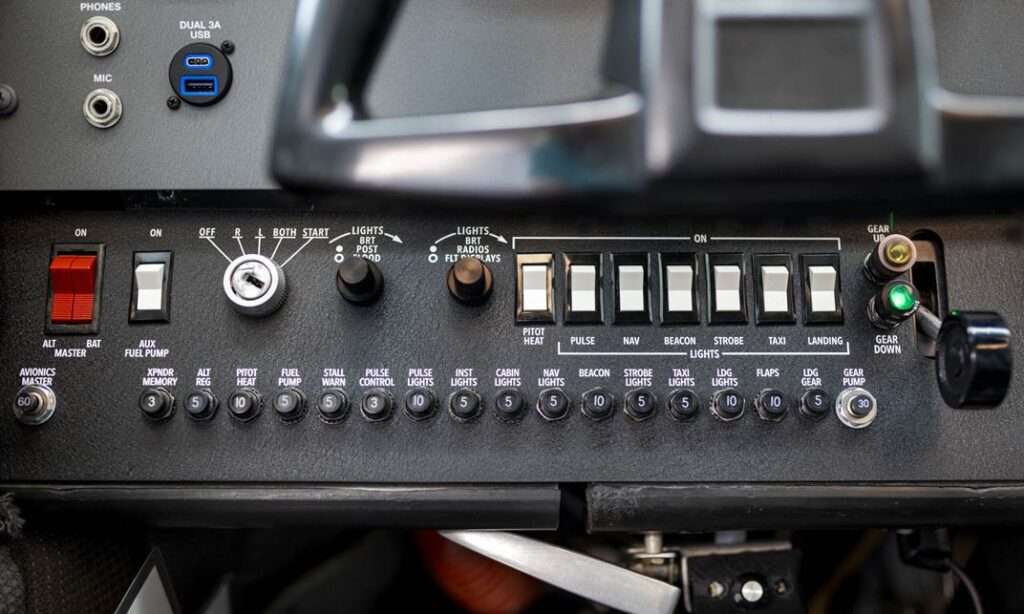Understanding the Avionics Master Switch: A Key Component in Aircraft Safety
The avionics master switch is a vital element in an aircraft’s electrical system. This switch acts as the central control point for powering on and off the aircraft’s avionics, which include critical systems like radios, autopilot, GPS, and communication devices. Without it, the pilot would need to manage each device individually, a cumbersome and risk-prone task, especially during critical flight stages.
Purpose and Function of the Avionics Master Switch
The avionics master switch provides multiple benefits to both the pilot and the aircraft’s systems:
- Power Distribution Control: The switch distributes electrical power from the aircraft’s electrical bus to the avionics, ensuring all systems receive adequate power. When activated, it energizes the avionics bus, powering up all associated electronics. This simple action controls the radios, intercom, navigation, and other critical avionics (SkySonar; AVweb).
- Protects Avionics from Electrical Surges: One of the primary roles of the avionics master switch is to protect sensitive equipment from electrical surges and voltage spikes, which can occur during engine startup or shutdown. Solid-state avionics are especially vulnerable to voltage fluctuations, and while damage might not be immediately visible, these systems could fail over time due to accumulated electrical stress (AVweb).
- Centralized Shutdown for Emergencies: In the event of an electrical failure, the avionics master switch allows the pilot to immediately shut down non-essential systems, conserving battery power for essential avionics like communication radios and navigation instruments. This feature is particularly useful during emergency landings or when the aircraft experiences a generator or alternator failure (AeroToolbox).
- Simplifies Pre-Flight and Post-Flight Checks: Pilots use the switch during pre-flight checks to power up all avionics at once and ensure they are functioning correctly. After landing, a single flip of the switch turns off all electronic devices, preventing accidental drain on the aircraft’s electrical system (SkySonar).
Variations in Avionics Master Switch Design
Avionics master switches come in several configurations, depending on the aircraft’s electrical system design:
- Basic Switch Design: In smaller aircraft, the avionics master switch is typically a simple on-off toggle that controls the power flow to the avionics bus. This straightforward design is reliable, but if the switch is located far from the avionics bus, additional protective elements like circuit breakers might be required(Unlimited Purchasing).
- Switch-Breaker Combination: Some aircraft integrate a switch-breaker design, which combines the on-off functionality with a circuit breaker. This provides an additional layer of protection by automatically cutting off power in the event of a short circuit or power overload. For added safety, these breakers are usually rated 25% higher than the maximum expected load to prevent unnecessary shutdowns (AVweb).
- Relay-Controlled Switches: In more complex aircraft, the avionics master switch may control a relay rather than directly powering the avionics bus. The relay system can keep avionics powered on even if the switch fails, ensuring continuous operation of critical devices like communication radios. However, relays also add complexity and potential points of failure, especially in scenarios involving engine restarts with low battery voltage (Unlimited Purchasing).

image source: https://newviewtech.com/
Importance for Aircraft Longevity and Safety
Failing to use an avionics master switch can lead to expensive repairs. Voltage spikes caused by engine startups with avionics powered on can slowly degrade sensitive electronics, leading to failures over time. Even if problems aren’t immediate, avionics that are frequently exposed to unregulated voltage are at higher risk of failure (AVweb). Given the substantial investment in modern avionics, which can make up as much as a third of an aircraft’s value (Unlimited Purchasing), protecting this equipment with an avionics master switch is a cost-effective safety measure.
Maintenance Considerations
Like all electrical components, avionics master switches require periodic maintenance and inspection. Over time, switches can become harder to operate, a sign they are nearing failure. If the switch becomes stiff or unresponsive, it should be replaced immediately to prevent a complete loss of avionics mid-flight. Regular inspection ensures that the switch remains functional and reliable (AVweb).
Conclusion
The avionics master switch is an essential safety feature in modern aircraft, providing centralized control over the aircraft’s electronic systems while protecting against electrical surges. Its ability to manage and safeguard critical avionics from voltage spikes makes it indispensable, particularly in today’s advanced aircraft with complex and sensitive electronic systems. Proper usage and regular maintenance of this switch are key to ensuring long-term avionics reliability and safety in flight.


